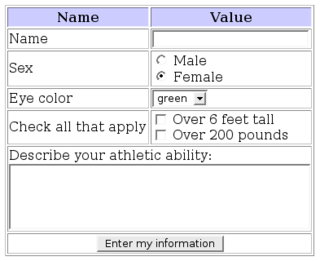Attribute-value_pair
Name–value pair
Data representation method in computing systems
A name–value pair, also called an attribute–value pair, key–value pair, or field–value pair, is a fundamental data representation in computing systems and applications. Designers often desire an open-ended data structure that allows for future extension without modifying existing code or data. In such situations, all or part of the data model may be expressed as a collection of 2-tuples in the form <attribute name, value> with each element being an attribute–value pair. Depending on the particular application and the implementation chosen by programmers, attribute names may or may not be unique.
This article needs additional citations for verification. (December 2009) |
